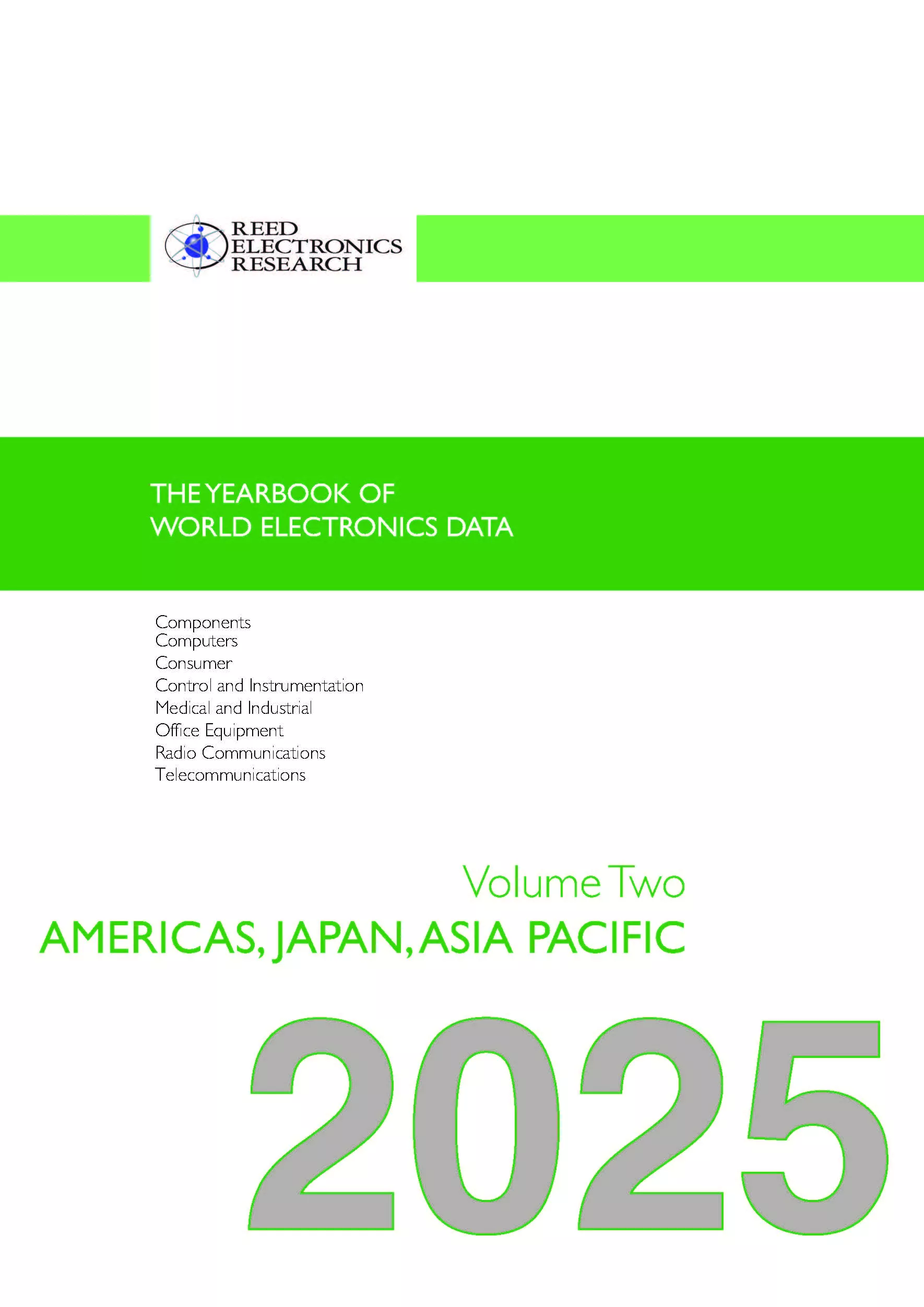
Yearbook of World Electronics Data - Volume 2 2025 - Americas, Japan, Asia Pacific
In providing the forecasts for the current study, which were made at the end of July/beginning of August, we have:
- Taken into accounts developments in the European and global economy, and the on-going impact of tariffs on growth.
- That the impact of inventory balancing across several segments and notably industrial eased over the final months of 2024 with orders normalising in the first half of 2025.
- Component prices and shortages normalised in 2024 although tariffs have put pressure on prices in 2025.
- Consumer spending will remain subdued due to the combination of higher inflation and on-going geopolitical uncertainty.
- AI and data centre consumption will be a key driver of growth in the overall computer market in 2025 and 2026. We also expect demand to feed through to higher computer equipment production.
Americas
In 2024, electronics production in North America amounted to US$359 billion with the US dominating accounting for 79.3% of the total. Mexico, which acts as the low-cost production base for the region, 18.2% while Canada accounted for only 2.5%. After declining in US dollars by 0.1% in 2023, growth increased by 4.3% in 2024 and is forecast to grow by a more substantial 8.2% in 2025.
In Canada the growth in electronics output after increasing by 8.6% and 4.3% in 2022 and 2023, respectively eased to 1.2% in 2024 in part due to lower demand from key export markets. Communications and radar and control and instrumentation represented the largest segments accounting for 36.1% and 35.7% of electronics output, respectively in 2024. The component segment is small, accounting for only 7.5% of output in 2024.
In US dollars electronics output in Mexico increased by 6.3% in 2024 with growth seen across the computing, industrial and communications segments. Growth is forecast to increase by a more robust 15.2% in 2025 led by a 30% increase in computer output on the back of growth in AI and data centre related spending, and a 6.7% increase in communications production with this offset by slower growth in industrial and an 8.0% decline in consumer video.
Mexico will continue to benefit from foreign investment as both OEMs and EMS/ODMs look to utilise low-costs sites in the country as a production base to serve the North American market. The focus will remain on electronics equipment with limited investment expected in expanding the country’s electronic components ecosystem.
After growth of 3.9% in 2023 the production of electronics equipment eased to 1.5% in 2024 but is forecast to rebound and increase by 4.3% in 2025 while electronics component output is forecast to increase by 13.1% in 2025 after posting double-digit growth of 11.9% in 2024 and a 6.0% decline in 2023.
The move by US companies to “re-shore” production has gained momentum and is expected to benefit from the move by US companies to localise manufacturing to offset higher tariffs. However, the US will face competition from Mexico for high-volume manufacturing.
Japan
Electronics output increased by 5.6% in 2024, a marked improvement compared to the prior year’s decline of 2.8%. Electronics equipment, which accounted for 44.7% of the total, increased by 1.6% while components increased by 9.0%.
Based on official figures for the first six months of the year overall electronics output is forecast to increase by 1.9% in 2025, a 3.6% rise in electronic component production offset by a 1.9% increase in electronics equipment output.
The semiconductor and passive components sectors will continue to be the principal drivers of the Japanese electronics industry over the medium-term with the focus on products based on the latest technologies and continued investment in new capacity. The component sector will be supported by growth in the industrial segment, the emergence of new communication products driven by Internet of Things and 5G and the computer segment, in particular products supporting the development of AI.
Asia
In 2024, the production of electronics equipment and components in Asia was valued at US$1,494 billion of which electronics equipment production accounted for 57.8% of the total with output dominated by computing and communications. Asia is also the centre for electronic component output globally.
China dominates electronics production in the region with total electronics output valued at US$801 billion in 2024. Taiwan and South Korea, with their strong focus on semiconductors, both reported electronics production of over US$150 billion in 2024 at US$164 billion and US$162 billion, respectively while Singapore with output of US$92 billion and Malaysia US$83 billion also benefited from an established semiconductor industry. Vietnam, which due to its low-costs has seen explosive growth in recent years, is a major centre for the production of mobile phones with overall electronics output of US$81 billion in 2024. Electronics production in India was valued at US$49 billion in 2024 growth being supported by government incentives as the country looks to establish itself as a major global manufacturing hub
13 major product groups
Market Data 2022-2028
Production Data 2022-2025
CD-option allows you to manipulate the data quickly and easily: produce your own subsets or summaries of the data, create your own forecasts or cut and paste the data into your own in-house reports and presentations.
19 countries covered:
Australia
Brazil
Canada
China
Hong Kong
India
Indonesia
Israel
Japan
Malaysia
Mexico
Philippines
Singapore
South Africa
South Korea
Taiwan
Thailand
USA
Vietnam

First Published 1983
ISBN 1 905429 983
Publication Date: September 2025
Pricing
The Corporate License allows electronic distribution (excluding distribution to third parties) of the report throughout your organisation, making it a cost effective and essential tool for your business